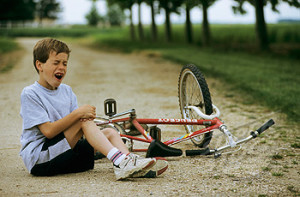Man, I died in that race!
A common complaint among younger, and some older swimmers is “I can’t seem to finish my races.” The initial diagnosis is usually “You just need to get in better shape.” The solutions then involve increasing training both in and out of the pool. While that may be a viable fix, the real problem often lies in poor core position throughout the race. When a swimmer cannot maintain an efficient, horizontal position in the water, they tend to decelerate more rapidly as fatigue sets in. Thus the end of the race becomes more difficult to complete.
Bill Boomer and Milt Nelms did a wonderful job of creating awareness of the importance of developing core-controlled balance, positioning, and stability. If the swimmer relies on the arms and legs to help create an efficient body position throughout the stroking cycle, then the arms and legs are performing two tasks: 1) creating a balanced, horizontally aligned torso; and 2) propelling the body through the water. If the first task can be primarily accomplished by utilizing core and adjoining muscle groups, then the arms and legs are more free to focus on creating velocity.
Many stroke flaws are sometimes a result of a lack of “internal” core control. A wide out-sweep on the catch in freestyle, overreaching during the backstroke entry, and low hips throughout the breaststroke and butterfly are but a few examples. In my opinion, it is important to take the time to look at the ability of the swimmer to create an efficient platform without the assistance of the arms and legs. This should begin with learning how to float. It is amazing how many swimmers are inept at being able to lie motionless in a horizontal position either in a prone or supine position. The want to use arms and legs to help them “balance.” I believe this tendency continues when they are swimming. As a result, the arms and legs perform a dual role. It is always interesting to watch young swimmers “working” to figure out how to float. I believe that in this process they are creating new neural pathways that will allow them to incorporate greater control of their core while they are swimming.
It is understood that some people simply cannot float. Lack of buoyancy, length of legs, high percent of lean body mass, all can be impediments to floating. Nevertheless, it is important for these swimmers to work on the same core stability skills in order to enhance their ability to stay more horizontal throughout the race. Utilizing floatation aids such as pull buoys or foam noodles can aid the low buoyancy swimmer to better understand the role of their core in creating efficient body position.
…to be continued.
